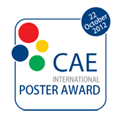Growing power demands and renewable energy generation are global trends that are putting considerable strain on grid infrastructures around the world. This factor is driving the market of Fault Current Limiters (FCLs) as they provide a means of ensuring that the amplitude of current under fault conditions remains within the short-circuit rating of existing network equipment. This brings improvements in the quality and reliability of the power system. FCLs can also play a significant role in reducing grid expenditure by providing a lower-cost alternative to upgrading network equipment for augmenting grid capacity to safely cope with growing prospective fault currents, while also extending the lifetime of grid equipment.
This results in significant savings of energy and cost that are highly attractive to the power utility industry. Finite Element Analysis (FEA) is commonly employed to study the current limiting characteristics of FCLs, in the effort of understanding and improving the performance while simultaneously reducing the design costs. The presence of expensive superconductor material is no doubt the main factor impacting the total cost of FCLs; however, the geometrical aspects of their design can also have a great impact not only on the total cost, but also on their current limiting capabilities. The FCL design optimization problem is, therefore, a multi-objective one, and it cannot be solved by means of standard FEA technology only. The problem becomes even more complex if the optimal design configuration needs to comply with constraints on current densities, flux densities, heat generation, in addition to performance. On the other hand, the automated search strategies - based on Genetic Algorithms, Game Theory and the like – that are available nowadays in Multi-objective Design Optimization (MDO) software packages, such as modeFRONTIER, have been proved to offer a practical and convenient way to effectively solve the problem. In this paper, we present an example of a real and innovative application where modeFRONTIER has been coupled with an FEA package (ANSYS) to determine the optimal design for an
industrial superconductor FCL. |




